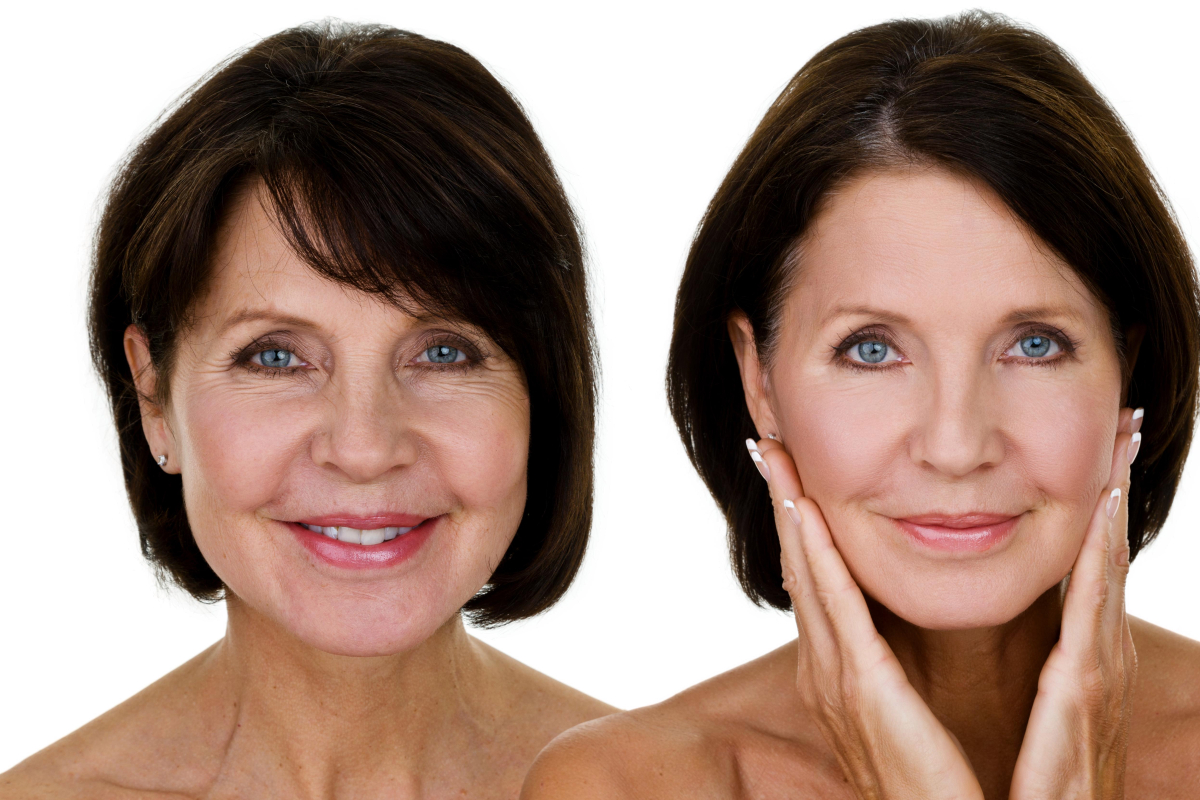
Many patients interested in facelifts have gone through some of the aging process already. They notice the cheeks, jowls, and neck sag and that they no longer have the youthful look they once had. When we age, we naturally lose volume and elasticity in our skin. The great thing about facelifts is that they function to restore your youthfulness in a way that still looks natural — yes, facelifts should look natural! Essentially, after a full recovery, there should be virtually no indication of having had a facelift.
A facelift restores one’s youthfulness by lifting, tightening tissues, and sculpting the facial features. Some very important parts of the face include the jawline, cheeks, neckline, eyes and eyelids, as well as eyebrows. While some patients may need less surgery than others, most patients require a tailored combination of smaller procedures for seamless results. For example, a patient who undergoes a facelift without addressing an aged neck will look less natural as the face and neck do not match regarding each area’s perceived age. Also, if a patient simply undergoes surgery on the lower face without addressing sagging skin around the brows and eyes, this may make them look odd as the lower face looks more structured than the top half of the face.
What’s great is that board-certified cosmetic plastic surgeon Dr. Adibfar tailors every facelift to each patient’s needs, desires, and facial characteristics. A combination of well-executed procedures during a facelift assures the best results possible for you. Let’s look at some common procedures. Many of our patients are eager to address multiple signs of aging and areas of the face. Most commonly, Dr. Adibfar focuses on reducing the appearance of jowls along the jaw and lifting the mid-face for a more naturally-tightened look. While that may sound straightforward, it involves tightening many of the patients underlying tissues.
Many of these patients also need assistance with bringing youthfulness back to their necks. That usually equates to removing any excess fat on the neck as well as re-attaching the patient’s neck or platysma muscles so that there are no long gaping holes that appear along the neck. A facelift most often also includes conservatively adding volume back to the face. While some patients prefer filler, Dr. Adibfar is also able to use fat transfer remarkably well to enhance a patient’s cheeks and allow them to look more refreshed. The eyebrows can also be an important focal point to address during a facelift. Some may require fat to be removed from the eyelids or under the eyes in combination with a lift to open up their eyes and make them look more revitalized.
As you can see, there are many small variations to consider which all depend on your unique and individual face matched with a meticulously tailored approach by your surgeon. The lower face, eyes, neck, cheeks, and jaw all function together to display a more harmonious younger-looking face. As mentioned, Dr. Adibfar creates a more youthful facelift by deeply transforming the underlying layers of fibrous tissue to lift and add volume. His expertise in facial anatomy allows him to sculpt the tissues and address the muscles in a way that delivers natural-looking results after recovery.
Depending on the facelift, the incisions are well-placed and hidden in the hairline and behind the ears. Patients requiring adjustments to their neck will have a small incision on the underside of their chin. Recovery is not as gruesome as you may think. While it certainly varies for every patient, a facelift usually allows 7-10 days recovery with slight bruising and swelling that still may appear after that time.
Click here to learn more or to book a consultation with one of Toronto’s leading board-certified cosmetic plastic surgeons, Dr. Adibfar.
